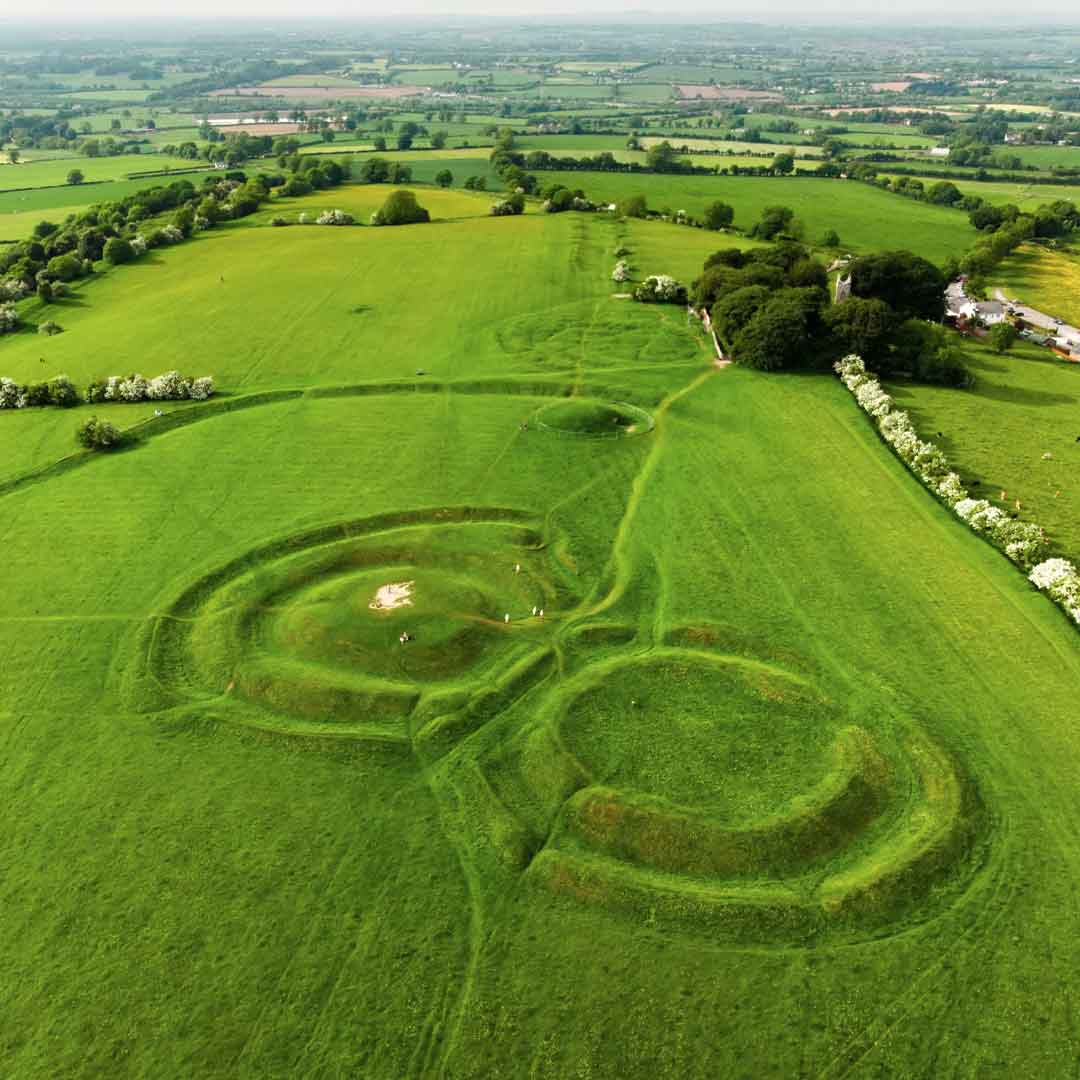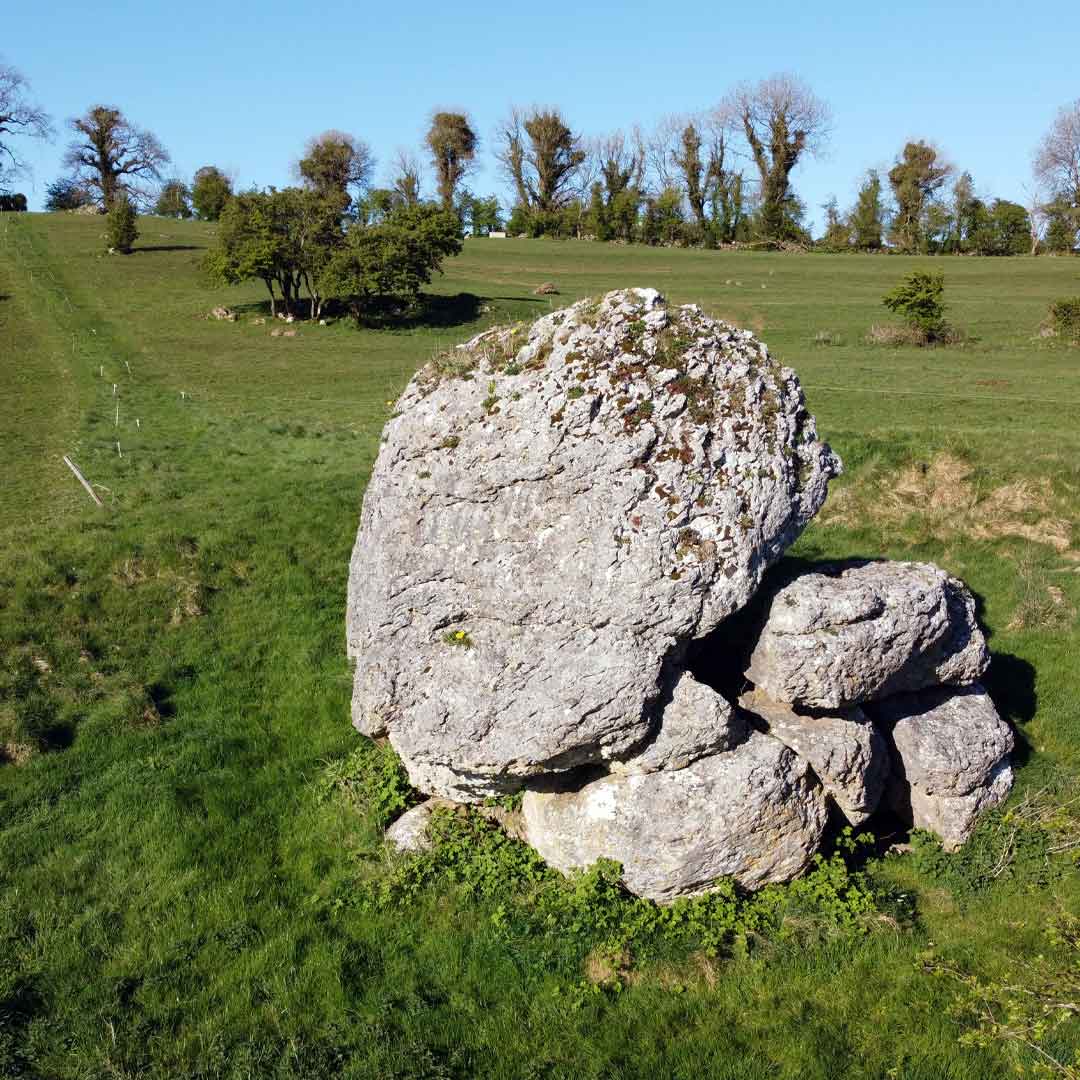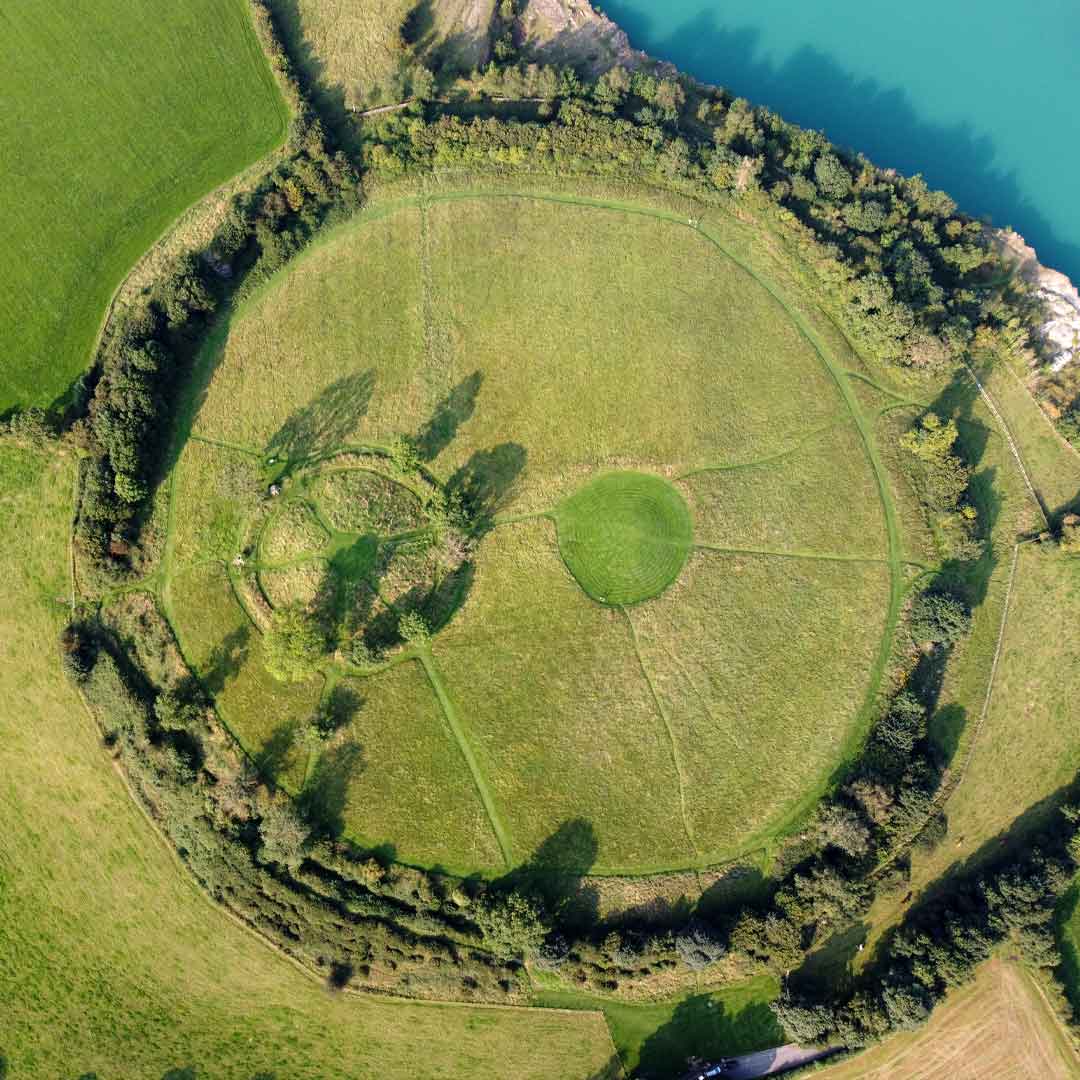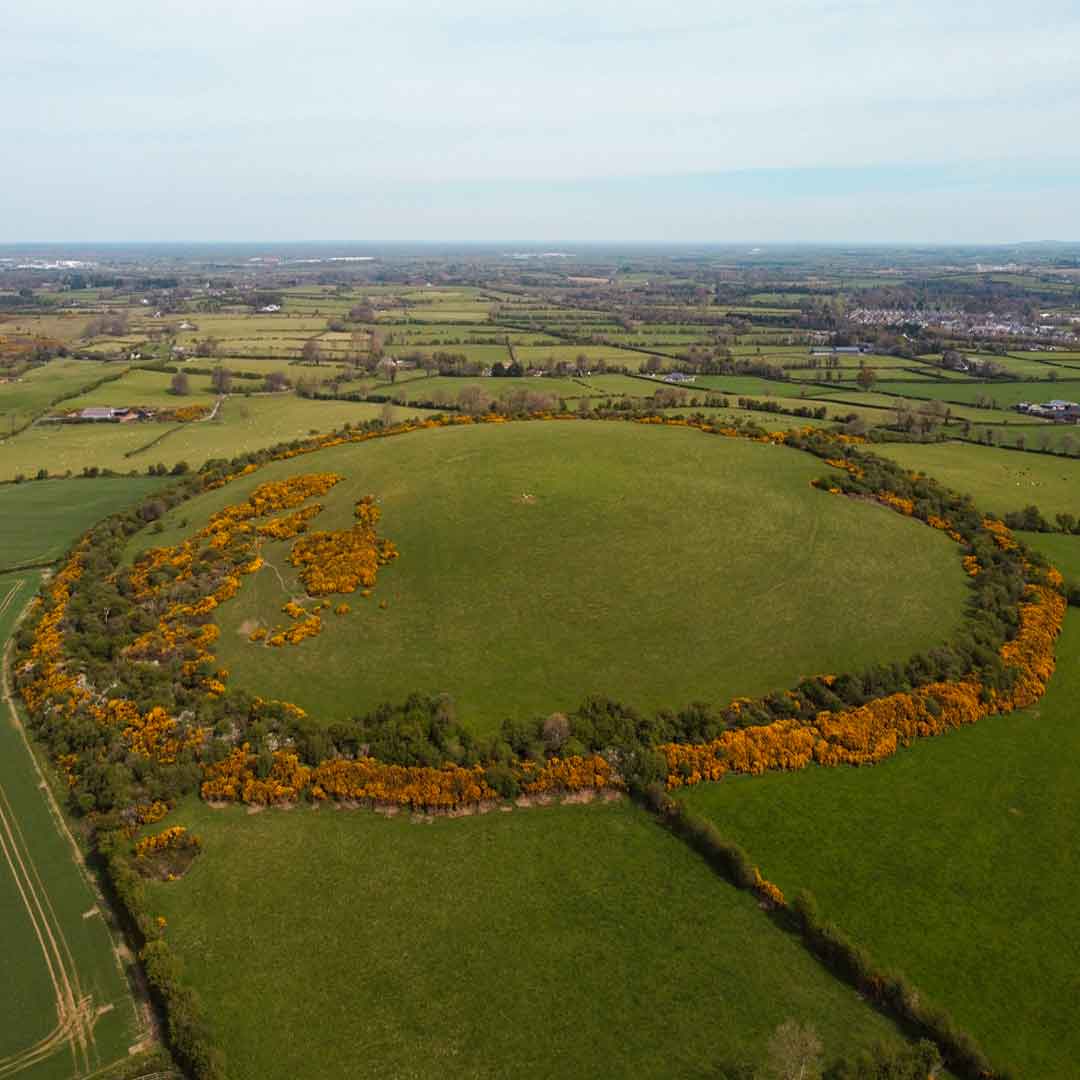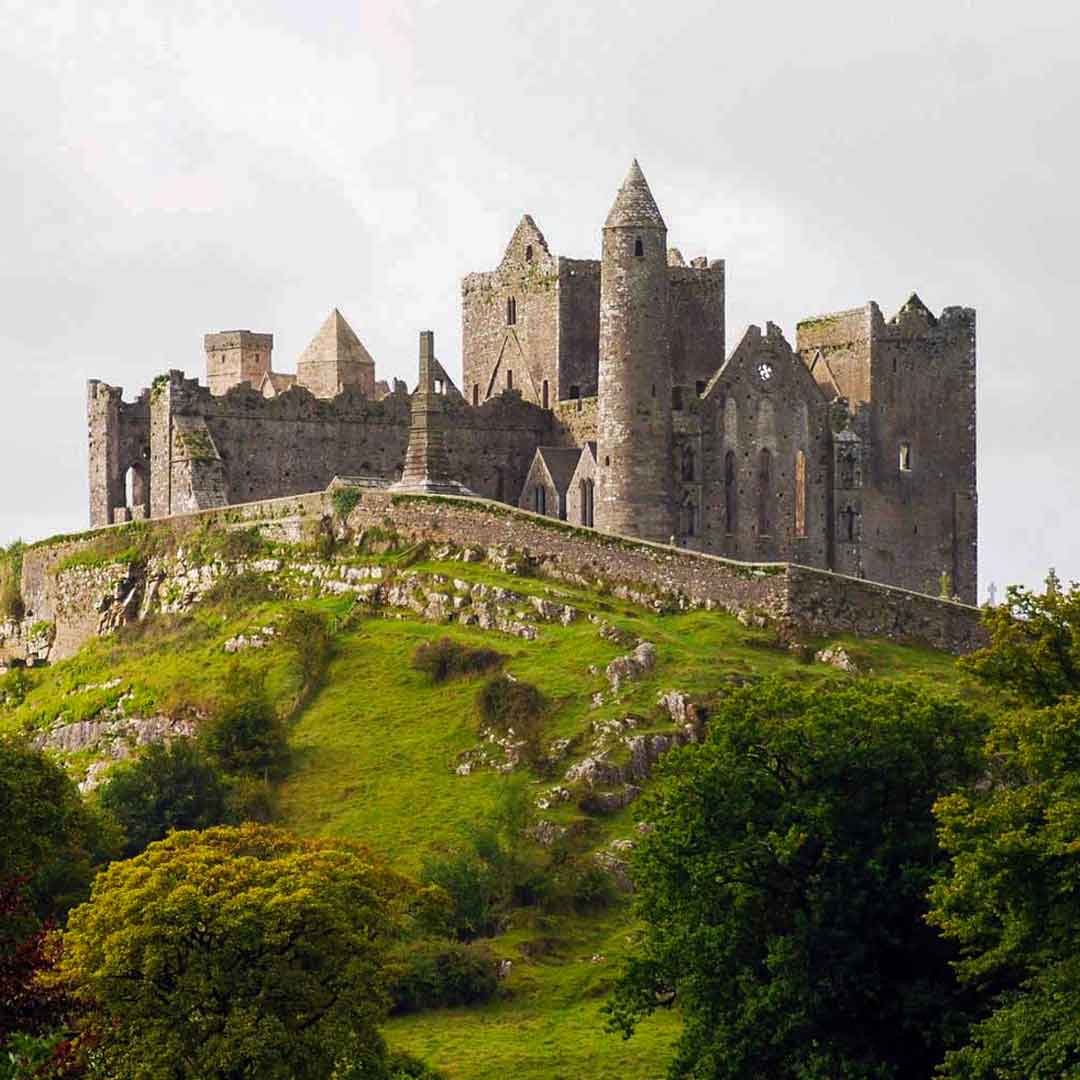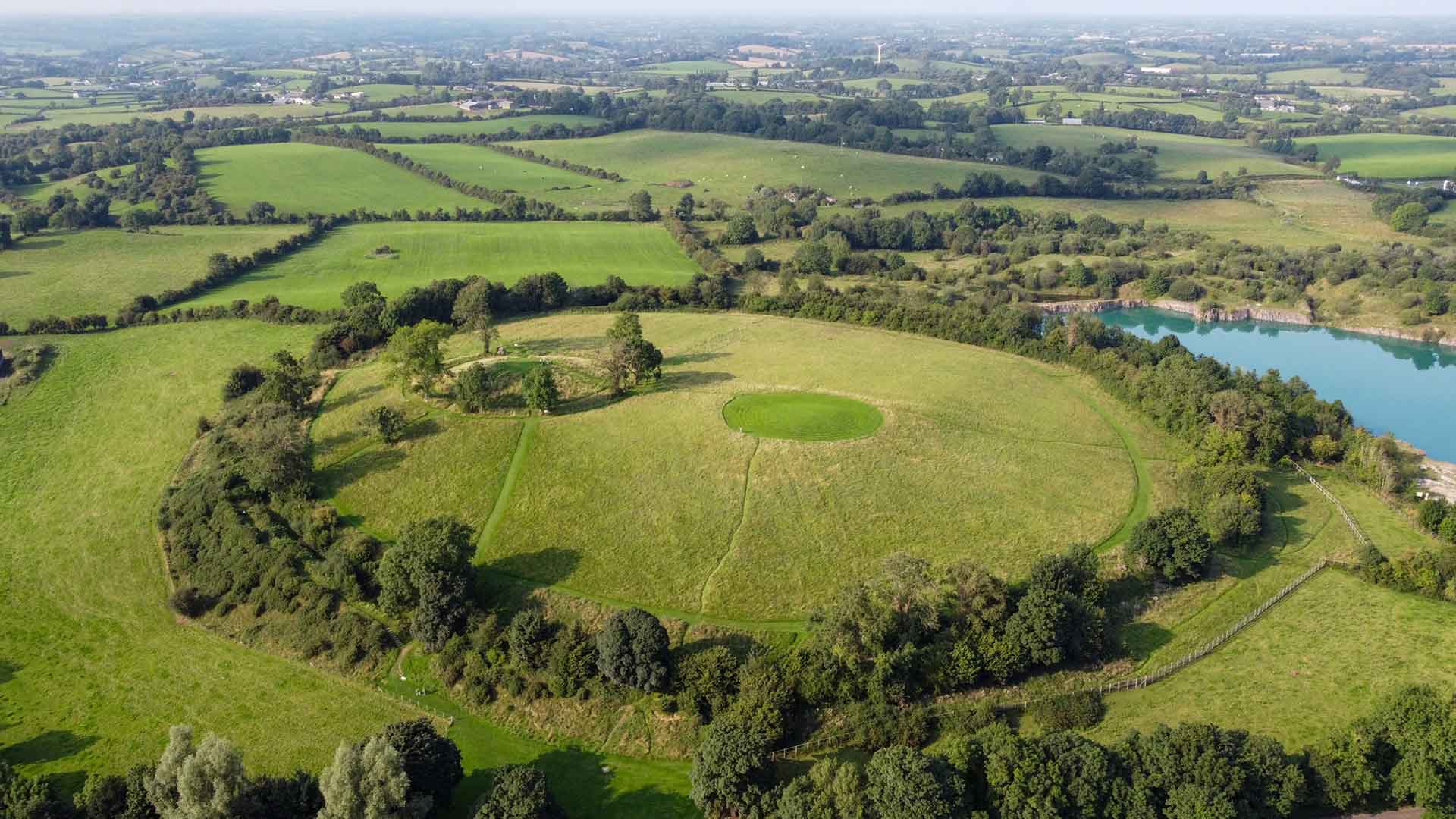
The Royal Sites
The Royal Sites of Ancient Ireland are a unique set of hilltop ritual complexes that served as ceremonial seats for the Gaelic kings of pre-Christian Ireland. These places of royal inauguration and ritual assembly are often surrounded by huge ceremonial enclosures, containing a large array of monuments within. These monuments range from Neolithic burial mounds and cairns, Bronze Age barrows & standing stones to Iron Age fortifications; indicating the continuous significance of these sites through millennia.
Along with their archaeological and historical importance of the Royal Sites, is their mythological importance. They provide the backdrop to many of the Irelands mythological tales, some of which are specifically related to these ceremonial sites. These myths, legends and traditions reflect the ancient Indo-European origins and universal belief systems of Iron Age Gaelic society.
Although each Iron Age clan or tribe (tuath) would have had its own place of ceremony, the term "Royal Sites" generally refers to the six largest and most important sites that have been collectively listed for nomination as a UNESCO World Heritage Site.
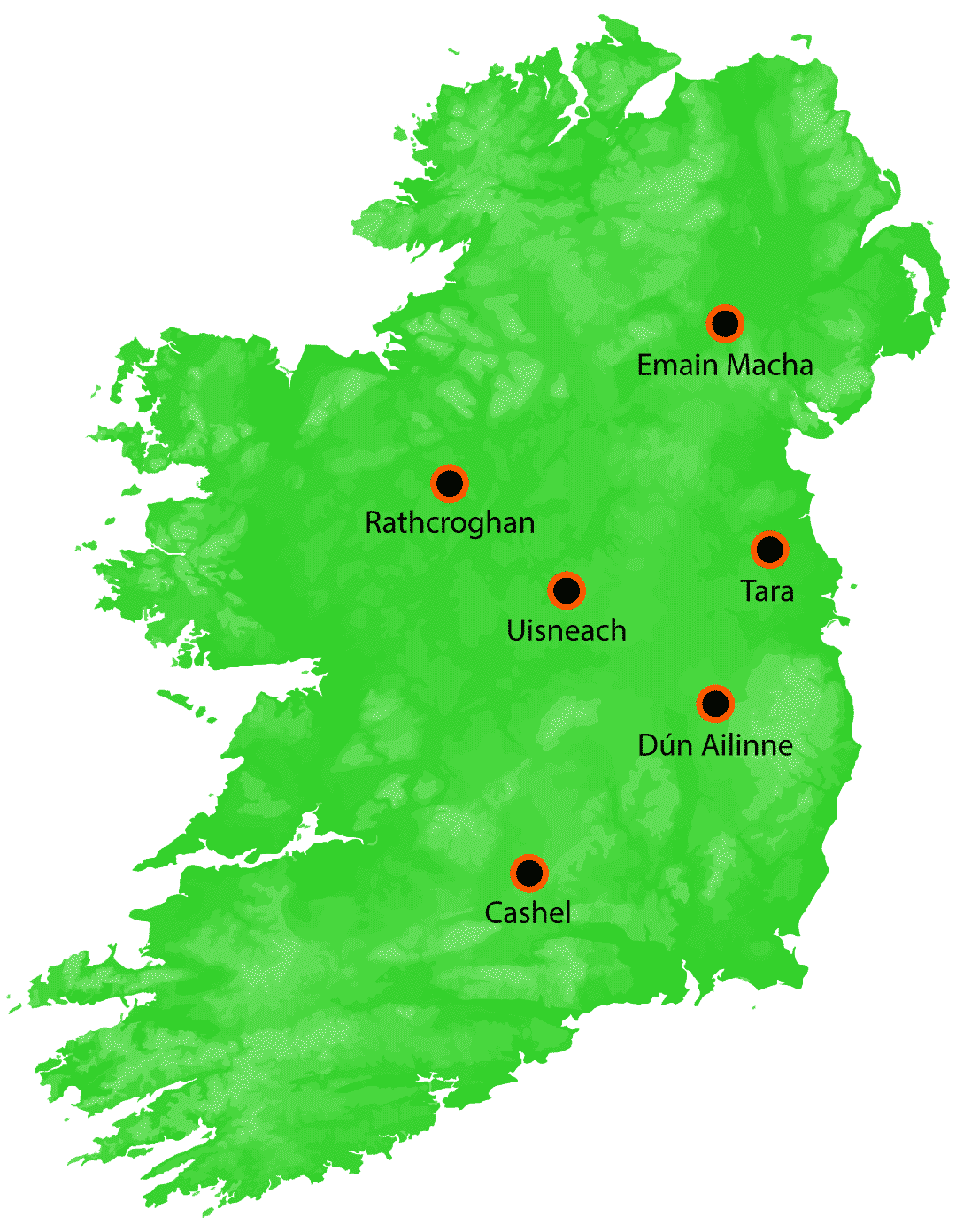
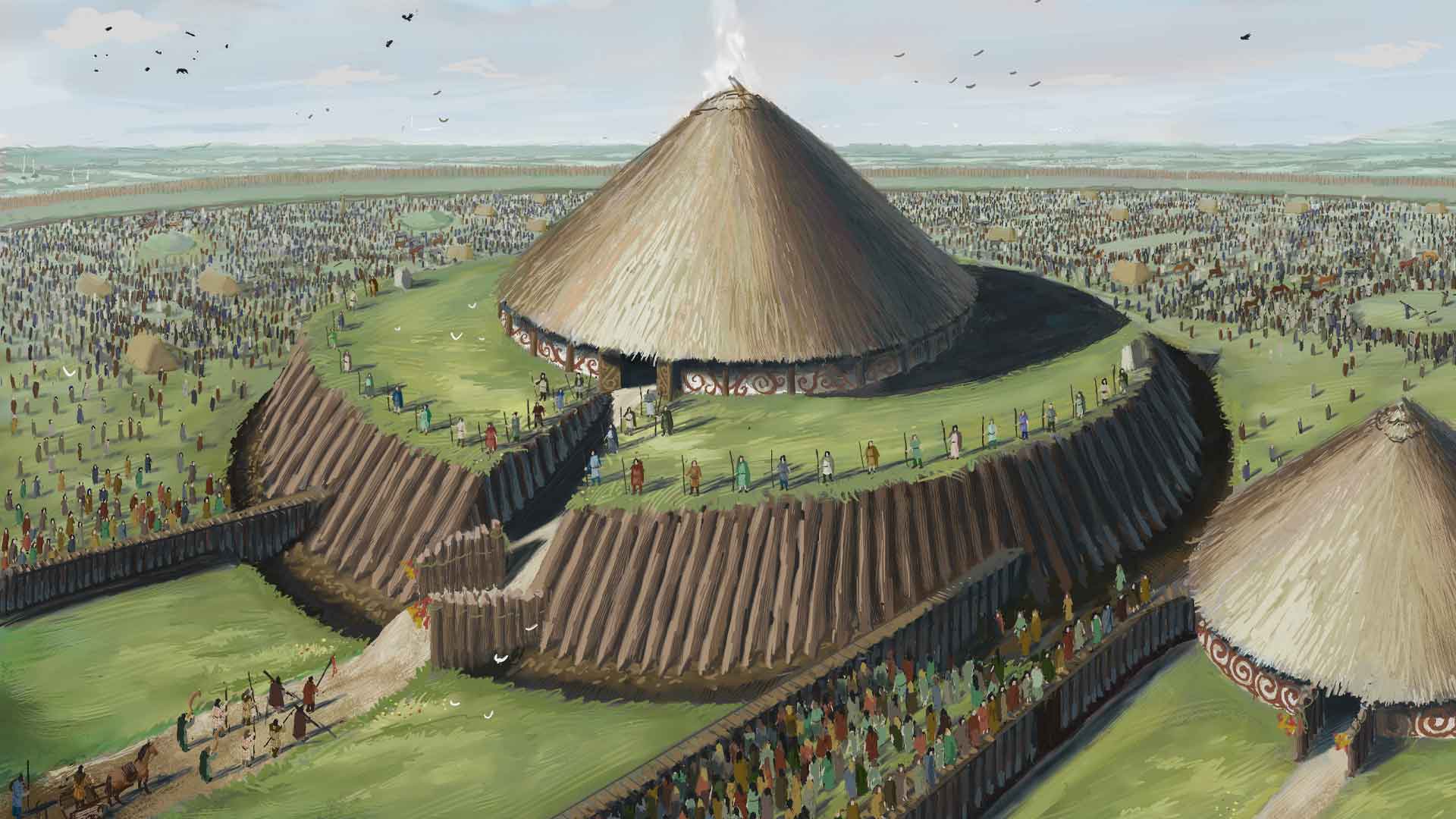
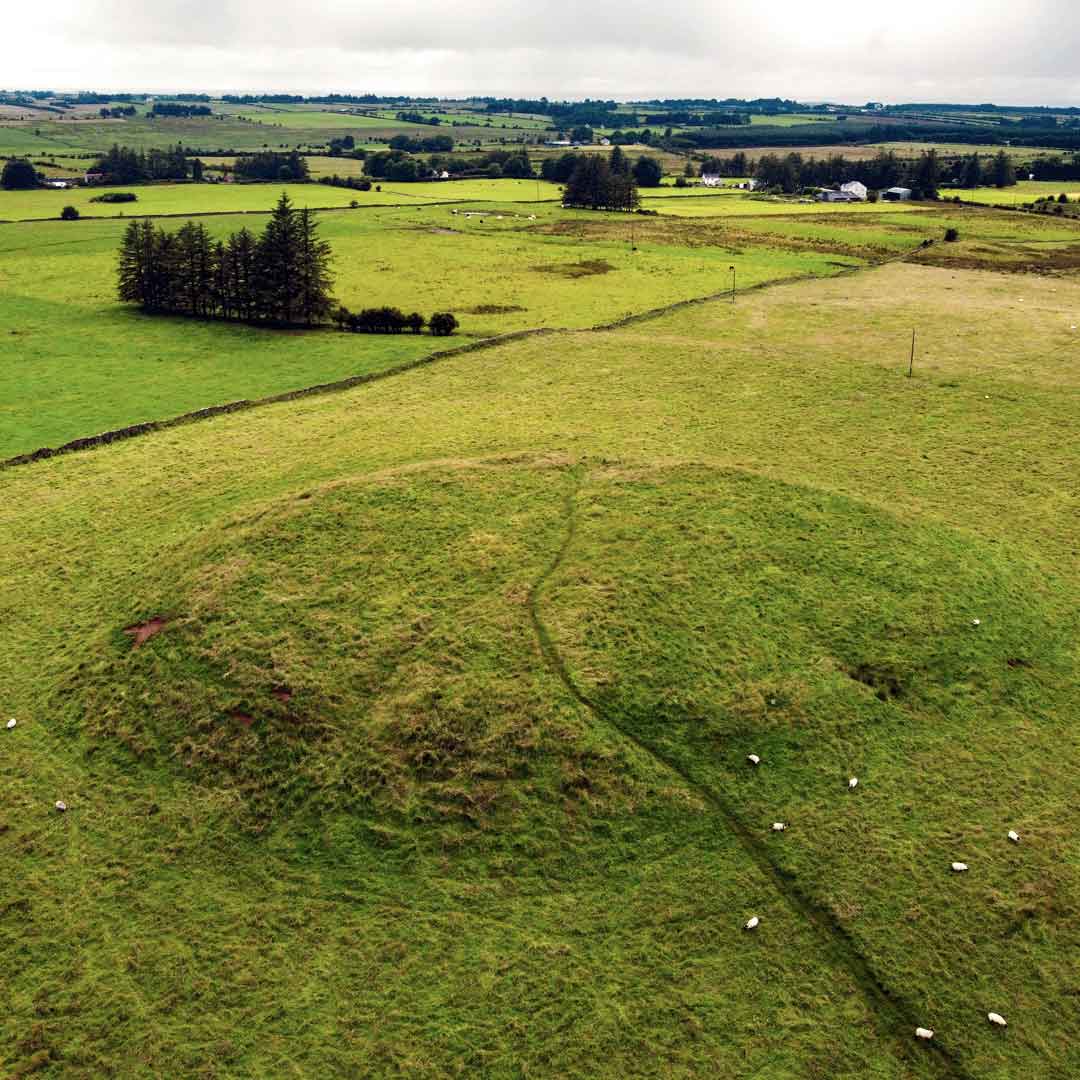
Four of these served as royal sites for each of the four provinces of Ireland: Dún Ailinne (Knockaulin) in Co. Kildare for Leinster; Emain Macha (Navan Fort) in Co. Armagh for Ulster; Caiseal na Rí (The Rock of Cashel), Co. Tipperary for Munster and Crúachan Aí (Rathcroghan) in Co. Roscommon for the kings of Connacht. However, the Old Irish word for province is ‘cóiced’, meaning literally ’a fifth’, indicating that there may once have been five provinces; although there is some debate as to the identity of this fifth Province.
The Hill of Tara in Co. Meath was the traditional seat of both the High King (Ard Rí) and the medieval Kingdom of Mide (the modern counties of Meath & Westmeath); which is sometimes referred to as the fifth province. However, this may be a bit of a medieval mix-up as the term 'cóiced' (fifth) for a province and the terms 'rí ruirech' (king over kings) or 'rí cóicid' (king of a fifth) for a provincial king predate the earliest known kings of Mide.
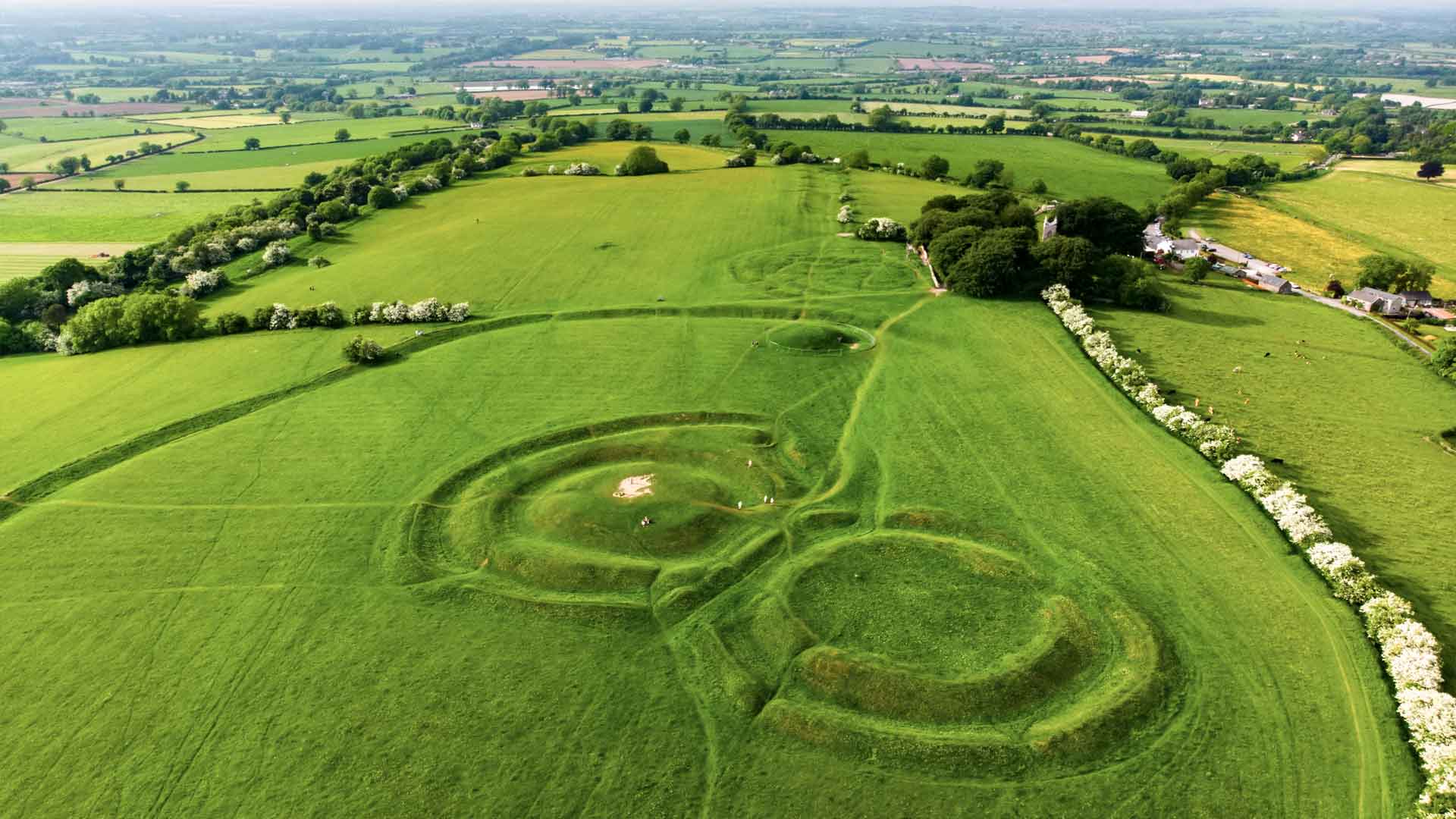
The term 'Mide' meaning middle, originally referred only to the Hill of Uisneach and the Fifth Province may have represented a mythical spiritual realm rather than a physical space, which leads us to the last of the Ancient Royal Sites… Since ancient times, the Hill of Uisneach in Co. Westmeath has been regarded as both the geographical and sacred centre of Ireland.
Whereas Tara was the political centre and seat of the High King, Uisneach's role was more spiritual; representing the female personification of the land and the union of the four provinces at the geographical and symbolic centre of the country. According to Irish mythology, it was at the summit of the Hill of Uisneach that Ériu gave sovereignty of the land to the Gaels; as long as they promised to name it after her.
It is likely that each province had its own sovereignty or land goddess; to whom its kings would be ritually married in an ancient inauguration rite known as the Banais Righi (wedding feast of kingship). Some of these provincial goddesses are also known to us from the later written mythologies: Queen Medb (Maeve) of Connacht, Mór Muman of Munster and Macha of Ulster.
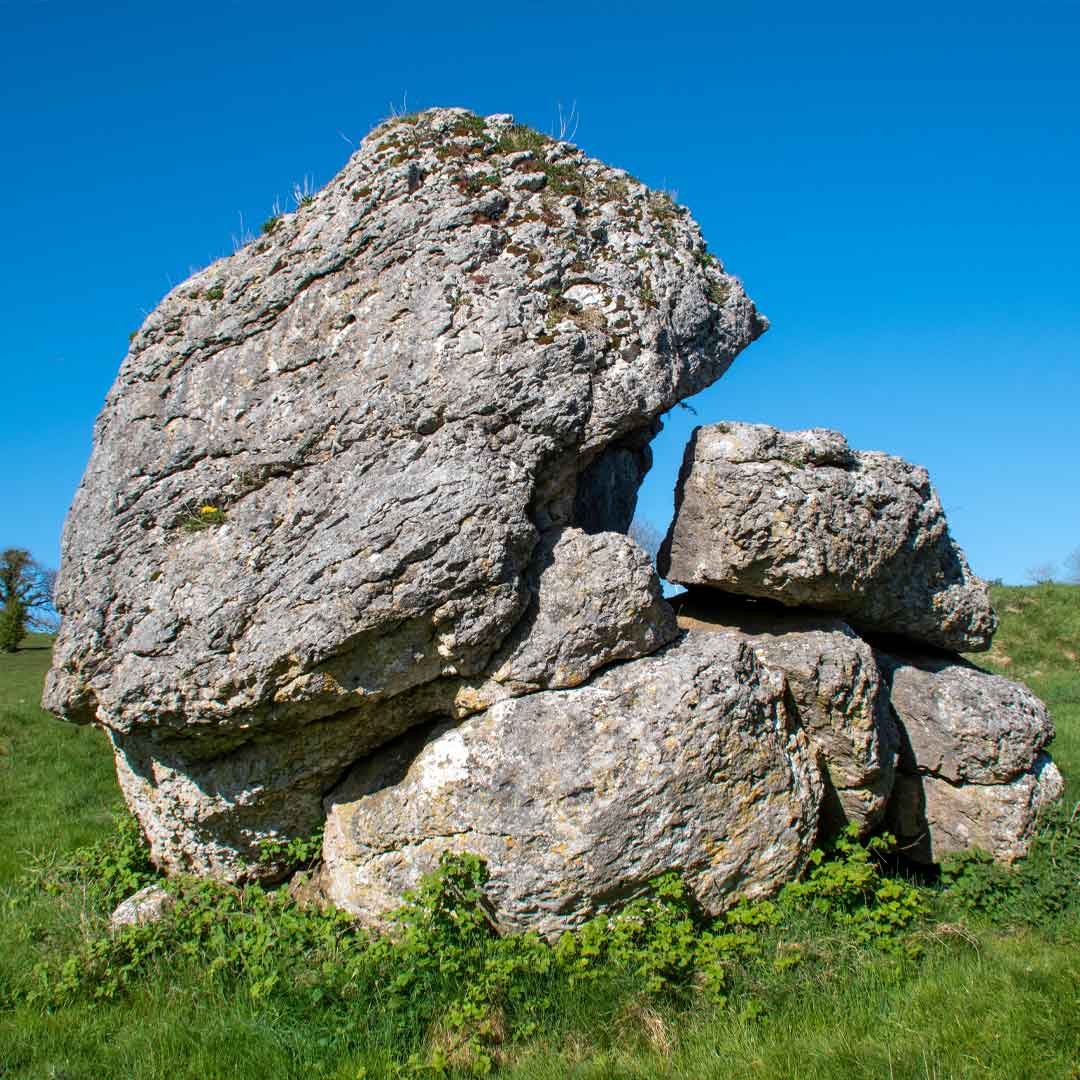
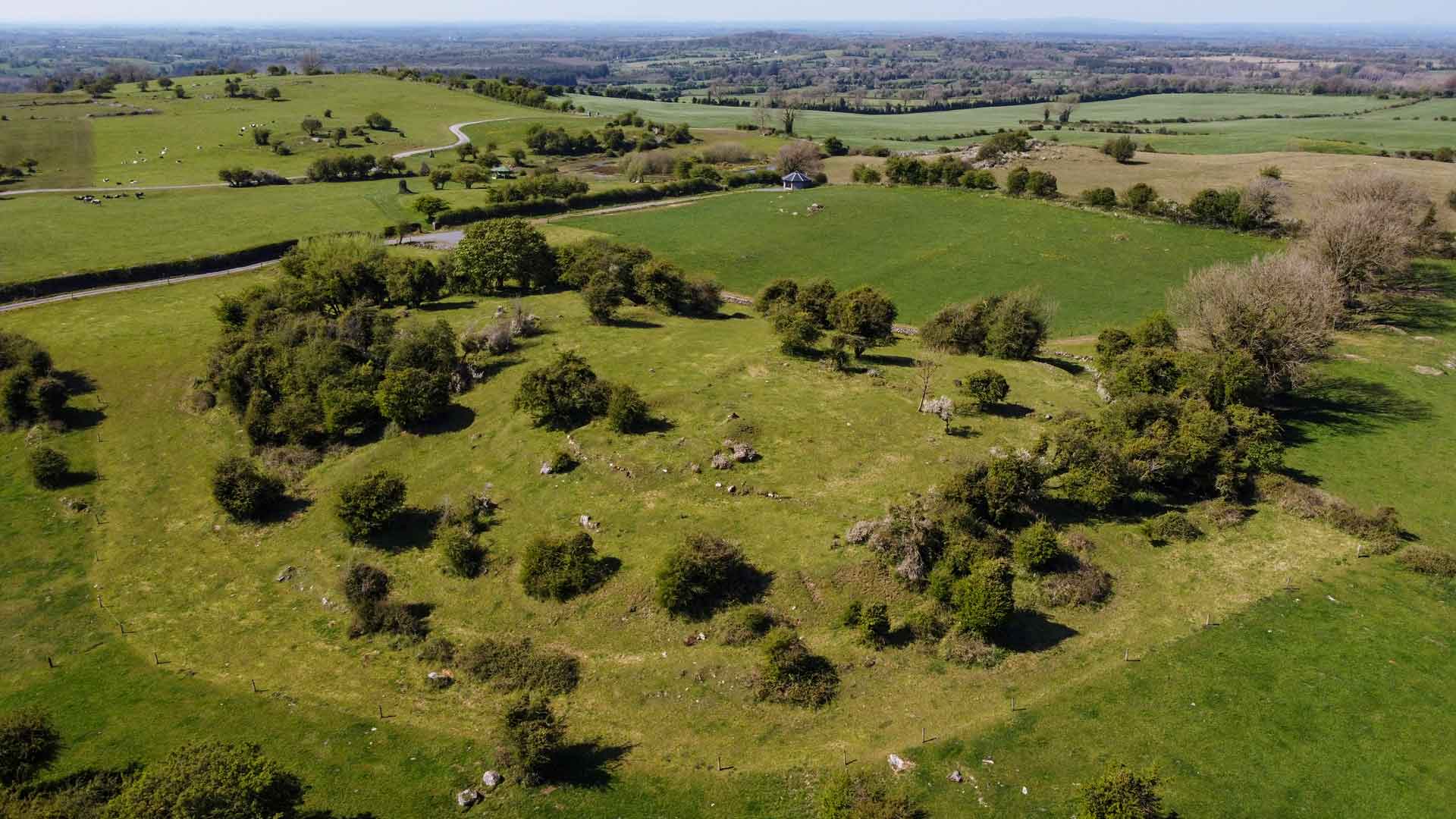
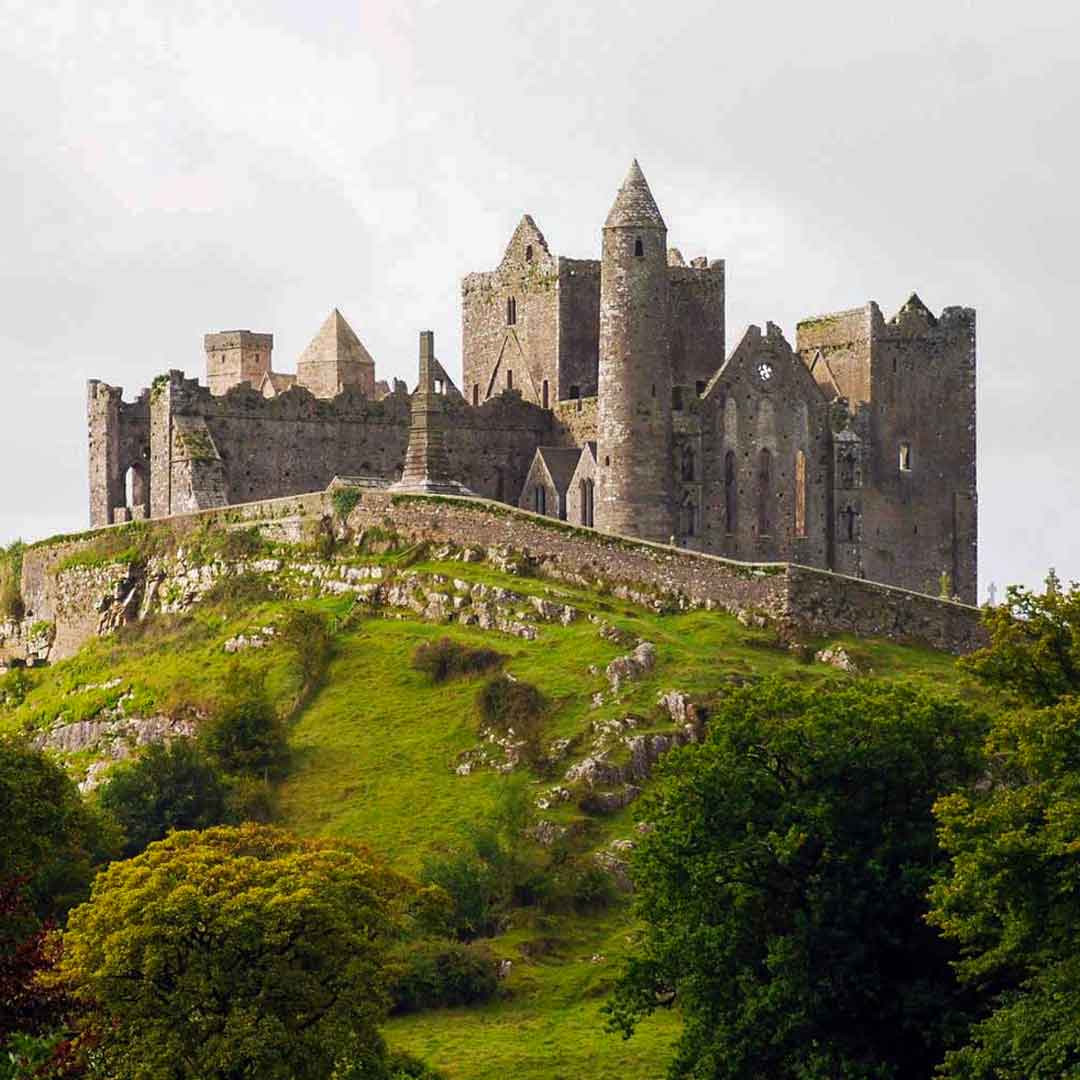
The 'odd one out' of the Royal Sites (archaeologically speaking) is the Rock of Cashel, traditional seat of the kings of Munster. Its name 'Caiseal na Rí' meaning ‘Fort of the Kings’ in Old Irish, indicating that this was a site of royal significance in prehistory. However, all of the buildings found here today are ecclesiastical, dating from after 1101 CE when the rock was donated to the Church by the King of Munster.
Even today (with the exception of Cashel), ceremonies and rituals still take place at the Royal Sites; albeit on a much smaller scale (with the possible exception of the Bealtaine Fire Festival on the Hill of Uisneach), that celebrate the land rather than the royalty. Their hilltop locations, with dramatic panoramic views, contributing to a unique sense of an ancestral identity rooted in the landscape of Ireland. In this and many ways, these ancient royal sites retain their role as spiritual and symbolic centres of Irish culture and identity to this day.
For more information on each of the Royal Sites, check out the examples below.
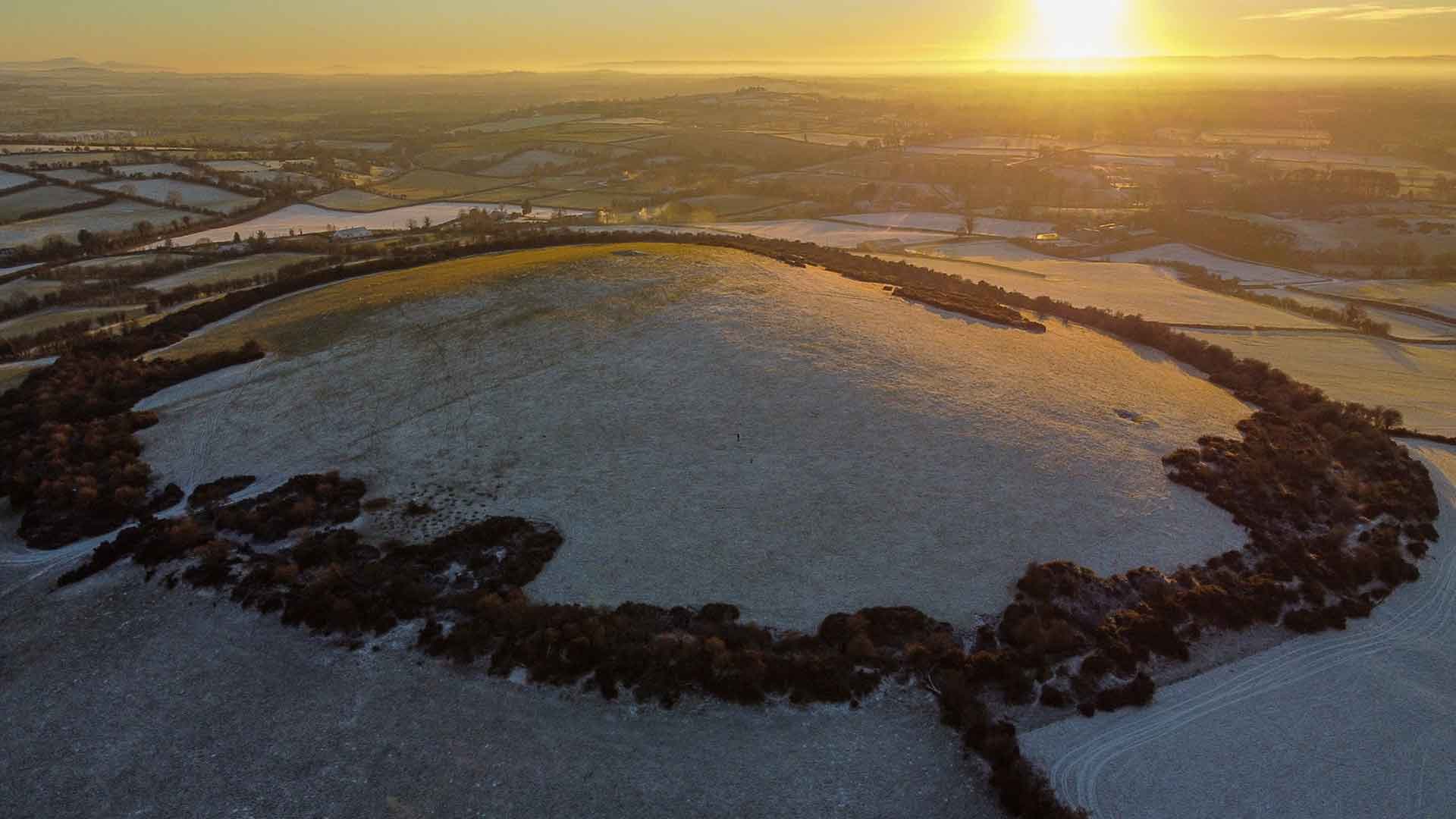
The Royal Sites of Ancient Ireland

The Royal Sites
The Royal Sites of Ancient Ireland are a unique set of hilltop ritual complexes that served as ceremonial seats for the Gaelic kings of pre-Christian Ireland. These places of royal inauguration and ritual assembly are often surrounded by huge ceremonial enclosures, containing a large array of monuments within. These monuments range from Neolithic burial mounds and cairns, Bronze Age barrows & standing stones to Iron Age fortifications; indicating the continuous significance of these sites through millennia.
Along with their archaeological and historical importance of the Royal Sites, is their mythological importance. They provide the backdrop to many of the Irelands mythological tales, some of which are specifically related to these ceremonial sites. These myths, legends and traditions reflect the ancient Indo-European origins and universal belief systems of Iron Age Gaelic society.
Although each Iron Age clan or tribe (tuath) would have had its own place of ceremony, the term "Royal Sites" generally refers to the six largest and most important sites that have been collectively listed for nomination as a UNESCO World Heritage Site.



Four of these served as royal sites for each of the four provinces of Ireland: Dún Ailinne (Knockaulin) in Co. Kildare for Leinster; Emain Macha (Navan Fort) in Co. Armagh for Ulster; Caiseal na Rí (The Rock of Cashel), Co. Tipperary for Munster and Crúachan Aí (Rathcroghan) in Co. Roscommon for the kings of Connacht. However, the Old Irish word for province is ‘cóiced’, meaning literally ’a fifth’, indicating that there may once have been five provinces; although there is some debate as to the identity of this fifth Province.
The Hill of Tara in Co. Meath was the traditional seat of both the High King (Ard Rí) and the medieval Kingdom of Mide (the modern counties of Meath & Westmeath); which is sometimes referred to as the fifth province. However, this may be a bit of a medieval mix-up as the term 'cóiced' (fifth) for a province and the terms 'rí ruirech' (king over kings) or 'rí cóicid' (king of a fifth) for a provincial king predate the earliest known kings of Mide.

The term 'Mide' meaning middle, originally referred only to the Hill of Uisneach and the Fifth Province may have represented a mythical spiritual realm rather than a physical space, which leads us to the last of the Ancient Royal Sites… Since ancient times, the Hill of Uisneach in Co. Westmeath has been regarded as both the geographical and sacred centre of Ireland.
Whereas Tara was the political centre and seat of the High King, Uisneach's role was more spiritual; representing the female personification of the land and the union of the four provinces at the geographical and symbolic centre of the country. According to Irish mythology, it was at the summit of the Hill of Uisneach that Ériu gave sovereignty of the land to the Gaels; as long as they promised to name it after her.
It is likely that each province had its own sovereignty or land goddess; to whom its kings would be ritually married in an ancient inauguration rite known as the Banais Righi (wedding feast of kingship). Some of these provincial goddesses are also known to us from the later written mythologies: Queen Medb (Maeve) of Connacht, Mór Muman of Munster and Macha of Ulster.



The 'odd one out' of the Royal Sites (archaeologically speaking) is the Rock of Cashel, traditional seat of the kings of Munster. Its name 'Caiseal na Rí' meaning ‘Fort of the Kings’ in Old Irish, indicating that this was a site of royal significance in prehistory. However, all of the buildings found here today are ecclesiastical, dating from after 1101 CE when the rock was donated to the Church by the King of Munster.
Even today (with the exception of Cashel), ceremonies and rituals still take place at the Royal Sites; albeit on a much smaller scale (with the possible exception of the Bealtaine Fire Festival on the Hill of Uisneach), that celebrate the land rather than the royalty. Their hilltop locations, with dramatic panoramic views, contributing to a unique sense of an ancestral identity rooted in the landscape of Ireland. In this and many ways, these ancient royal sites retain their role as spiritual and symbolic centres of Irish culture and identity to this day.
For more information on each of the Royal Sites, check out the examples below.

The Royal Sites of Ancient Ireland

The Royal Sites
The Royal Sites of Ancient Ireland are a unique set of hilltop ritual complexes that served as ceremonial seats for the Gaelic kings of pre-Christian Ireland. These places of royal inauguration and ritual assembly are often surrounded by huge ceremonial enclosures, containing a large array of monuments within. These monuments range from Neolithic burial mounds and cairns, Bronze Age barrows & standing stones to Iron Age fortifications; indicating the continuous significance of these sites through millennia.
Along with their archaeological and historical importance of the Royal Sites, is their mythological importance. They provide the backdrop to many of the Irelands mythological tales, some of which are specifically related to these ceremonial sites. These myths, legends and traditions reflect the ancient Indo-European origins and universal belief systems of Iron Age Gaelic society.
Although each Iron Age clan or tribe (tuath) would have had its own place of ceremony, the term "Royal Sites" generally refers to the six largest and most important sites that have been collectively listed for nomination as a UNESCO World Heritage Site.


Four of these served as royal sites for each of the four provinces of Ireland: Dún Ailinne (Knockaulin) in Co. Kildare for Leinster; Emain Macha (Navan Fort) in Co. Armagh for Ulster; Caiseal na Rí (The Rock of Cashel), Co. Tipperary for Munster and Crúachan Aí (Rathcroghan) in Co. Roscommon for the kings of Connacht. However, the Old Irish word for province is ‘cóiced’, meaning literally ’a fifth’, indicating that there may once have been five provinces; although there is some debate as to the identity of this fifth Province.
The Hill of Tara in Co. Meath was the traditional seat of both the High King (Ard Rí) and the medieval Kingdom of Mide (the modern counties of Meath & Westmeath); which is sometimes referred to as the fifth province. However, this may be a bit of a medieval mix-up as the term 'cóiced' (fifth) for a province and the terms 'rí ruirech' (king over kings) or 'rí cóicid' (king of a fifth) for a provincial king predate the earliest known kings of Mide.


The term 'Mide' meaning middle, originally referred only to the Hill of Uisneach and the Fifth Province may have represented a mythical spiritual realm rather than a physical space, which leads us to the last of the Ancient Royal Sites… Since ancient times, the Hill of Uisneach in Co. Westmeath has been regarded as both the geographical and sacred centre of Ireland.
Whereas Tara was the political centre and seat of the High King, Uisneach's role was more spiritual; representing the female personification of the land and the union of the four provinces at the geographical and symbolic centre of the country. According to Irish mythology, it was at the summit of the Hill of Uisneach that Ériu gave sovereignty of the land to the Gaels; as long as they promised to name it after her.
It is likely that each province had its own sovereignty or land goddess; to whom its kings would be ritually married in an ancient inauguration rite known as the Banais Righi (wedding feast of kingship). Some of these provincial goddesses are also known to us from the later written mythologies: Queen Medb (Maeve) of Connacht, Mór Muman of Munster and Macha of Ulster.


The 'odd one out' of the Royal Sites (archaeologically speaking) is the Rock of Cashel, traditional seat of the kings of Munster. Its name 'Caiseal na Rí' meaning ‘Fort of the Kings’ in Old Irish, indicating that this was a site of royal significance in prehistory. However, all of the buildings found here today are ecclesiastical, dating from after 1101 CE when the rock was donated to the Church by the King of Munster.
Even today (with the exception of Cashel), ceremonies and rituals still take place at the Royal Sites; albeit on a much smaller scale (with the possible exception of the Bealtaine Fire Festival on the Hill of Uisneach), that celebrate the land rather than the royalty. Their hilltop locations, with dramatic panoramic views, contributing to a unique sense of an ancestral identity rooted in the landscape of Ireland. In this and many ways, these ancient royal sites retain their role as spiritual and symbolic centres of Irish culture and identity to this day.
For more information on each of the Royal Sites, check out the examples below.



